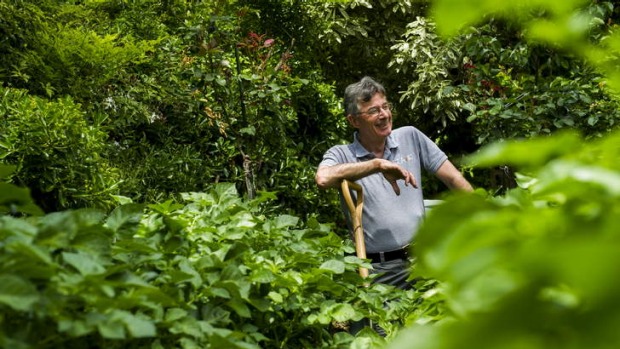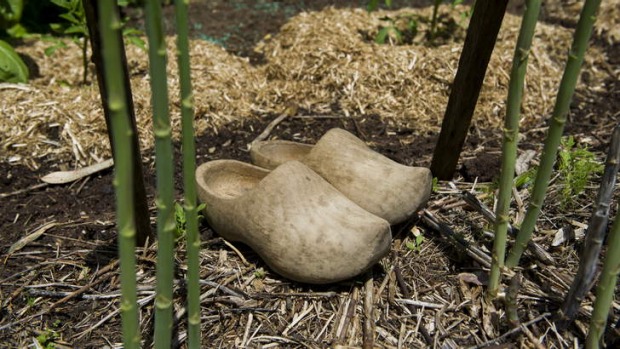
Adrian van Leest was born in the Netherlands, where his father had a community garden plot. When the family moved to Australia in 1955, they lived in Creswick, Victoria, on a large block cultivated by Adrian from one end to the other. He was given a small allotment of nine square metres. An incredible crop of potatoes had him hooked.
Van Leest and his wife moved to Canberra in 1978 and Campbell in 1999. He grows three varieties of potatoes, including the ”innovator”, which has russet skin, and which he says McCains uses for its chips, and two experimental varieties that he has developed from ”true seed”, as opposed to seed potatoes. A purple-skinned variety he has called blutwurst and eureka gold, a small egg-shaped potato that microwaves to be rich and creamy.
He also grows tomato seedlings for his colleagues. He also runs a competition for the biggest and best tomatoes, which helps with his breeding program. His largest so far weighed 685 grams and was the size of a dinner plate.

He calls them ”Opa’s brandywine”. They’re derived from a heirloom cultivar, and named for his father, Kees (Kevin) van Leest, who got the tomato from his neighbour, Pat Murphy, in Ballarat in 1999. Murphy in turn had sourced the tomato from a doctor in Ballarat who had grown them for 30 years.


